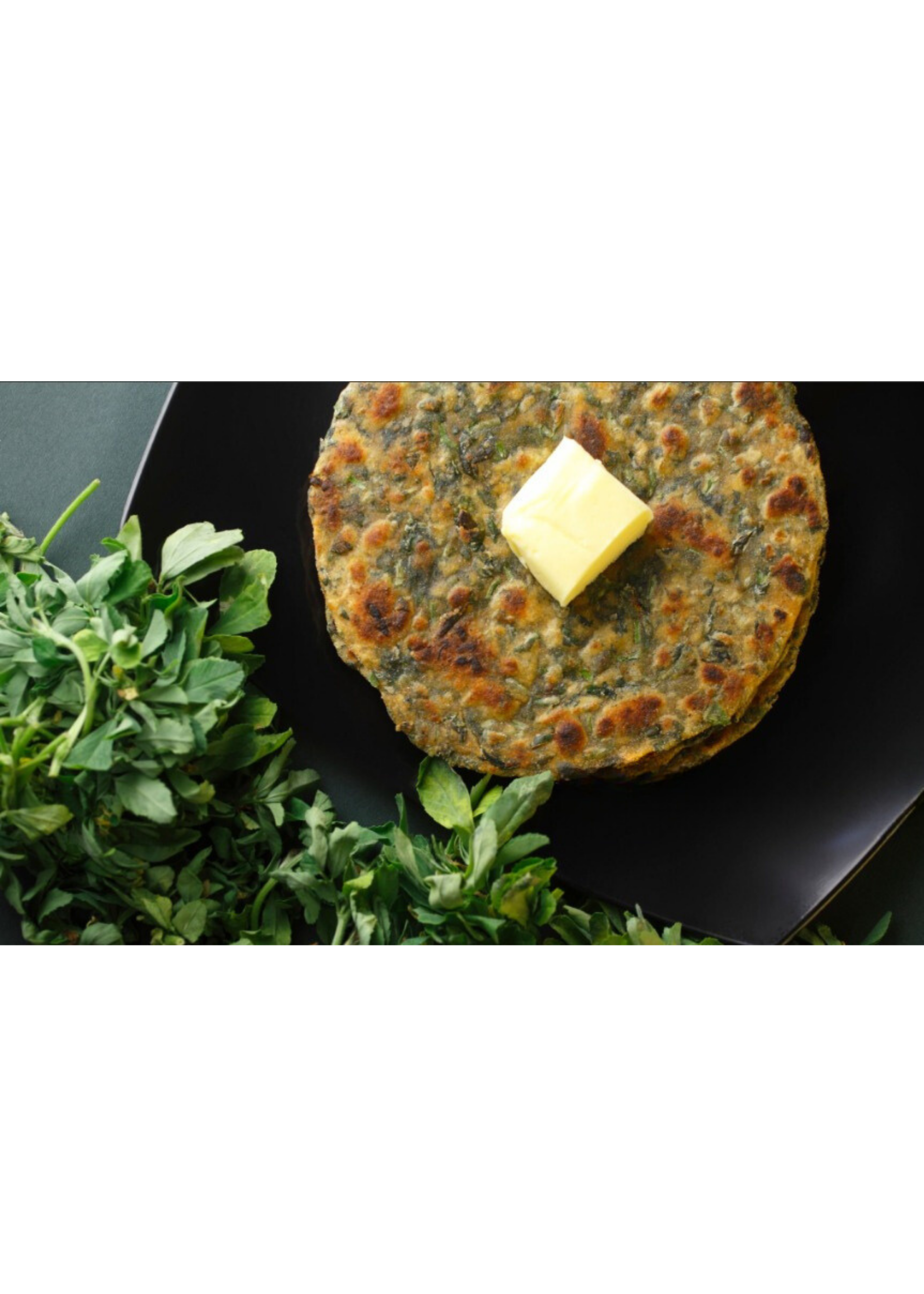About
Methi Parantha is a delicious Indian flatbread made with fenugreek leaves (methi) and flour but here’s a recipe gluten-free methi parantha recpie for those parantha loves who have gluten intolorence. Here’s a recipe for how to make methi parantha:
Ingredients:
– 1 cup gluten-free flour (a mix of bajra, ragi, and rice flour)
– 1 cup finely chopped fresh methi (fenugreek) leaves
– 1 tsp cumin seeds
– 1 tsp coriander seeds
– 1 green chili, finely chopped
– 1 tbsp grated ginger
– 1 tbsp lemon juice
– Salt to taste
– Water as needed
– Ghee or oil for cooking
Method:
- In a mixing bowl, combine the gluten-free flour, chopped methi leaves, cumin seeds, coriander seeds, green chili, grated ginger, lemon juice, and salt. Mix well.
- Slowly add water and knead to form a soft, pliable dough. Cover and let it rest for 15-20 minutes.
- Divide the dough into lemon-sized balls. Roll each ball into a thin circle using a rolling pin.
- Heat a non-stick tawa or griddle and cook the parantha on both sides, drizzling a little ghee or oil, until golden brown spots appear.
- Serve hot with a side of low-fat raita or any other healthy accompaniment.
Nutritional Value (per serving):
– Calories: 180 kcal
– Carbohydrates: 27g
– Protein: 6g
– Fat: 6g
– Fiber: 4g
Certainly, let me provide the benefits of using gluten-free flours and incorporating methi (fenugreek) in this recipe before discussing the nutritional value.
Benefits of Gluten-Free Flours:
– Suitable for individuals with celiac disease or gluten intolerance, as these flours are naturally free of gluten.
– Bajra and ragi are both high in fiber, which can promote feelings of fullness and aid in weight management.
– These gluten-free flours are also rich in essential minerals like iron, calcium, and magnesium, which are important for overall health.
– The use of a flour blend, rather than a single gluten-free flour, helps create a more balanced nutritional profile and improves the texture of the parantha.
Benefits of Methi (Fenugreek) Leaves:
– Methi leaves are a rich source of dietary fiber, which can help regulate bowel movements and improve digestion.
– They contain a compound called 4-hydroxyisoleucine, which has been shown to help regulate blood sugar levels, making this recipe suitable for individuals with diabetes.
– Methi leaves are also a good source of vitamins, particularly vitamins A, C, and K, as well as minerals like iron, calcium, and potassium.
– The bitter taste of methi leaves can help stimulate the production of digestive juices, aiding in the overall digestive process.
– Methi leaves have anti-inflammatory properties and may help reduce the risk of certain chronic diseases.
This balanced nutritional profile, with a focus on high-fiber, gluten-free ingredients and the inclusion of methi leaves, makes this recipe a healthy and weight-loss friendly option.
FAQs:
-
Can I use any other gluten-free flour instead of the mix?
Yes, you can use 100% bajra flour or ragi flour if preferred. The mix of flours provides a balanced nutritional profile.
-
How can I make this recipe more weight-loss friendly?
To make this recipe more weight-loss friendly, you can:
– Use less oil or ghee for cooking
– Serve it with a low-calorie, high-fiber vegetable raita
– Pair it with a light, protein-rich side dish like grilled chicken or roasted vegetables
-
Is this recipe suitable for diabetics?
Yes, this recipe is suitable for diabetics as it is made with gluten-free, high-fiber flours like bajra and ragi. The addition of methi leaves also helps regulate blood sugar levels.
-
Can I make the parantha dough in advance?
Yes, you can make the parantha dough in advance and store it in the refrigerator for up to 3 days. When ready to use, let it come to room temperature before rolling and cooking.
Written By:- Amisha


